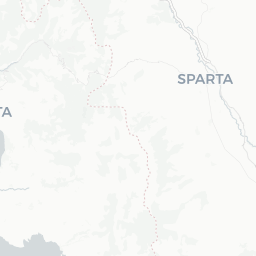






Sparta Excavation 1906-1910 Season 1909
Excavation: Research excavation
During the fourth season of excavation in the Sparta region by the British School at Athens in 1909, the Artimis Orthia sanctuary sacred enclosure walls of different periods have been discovered, especially behind the temple and-to the east of the altar. An investigation of the lowest strata demonstrated that the archaic altar and primitive temple are later than the cobble pavement with which the hieron was paved, and the walls of the hieron at this early period have now been found. This gives an earlier stage of the sanctuary when the precinct was smaller than in subsequent periods and the centre of the cult was closer to the centre of the hollow in which the sanctuary stood. At this stage there seems to have been no temple, but there are remains of what was probably the altar. Geometric pottery was found below the cobble pavement. In order to carry through this work a further small portion of the foundations of the Roman Amphitheatre was removed. Part of a large subterranean ater-channel (ca. 4th century BC) that had been discovered in 1906 has been fully excavated and is solidly built of dressed stones and roofed with large slabs. In May, the building which has been for long identified with the Menelaion was excavated. This building stands on a hill overlooking the east bank of the Eurotas with a commanding view of the site of Sparta. The building was shown to be an oblong platform which may have supported a small temple or other monument. This platform stood upon another, from which it was reached by a ramp, the traces of which are preserved. To this structure a terrace was added later on two sides. The date may be the fifth century. Below all the other finds some Mycenaean sherds were discovered, and some Mycenaean houses, as yet only partially examined, were found a short distance away.
Active from /05/1909 to /06/1909.
Wace, Mr Alan John Bayard
Thompson, Mr Maurice S. O.B.E.
Dawkins, Mr Richard McGillivray
[Journal] The Annual of the British School at Athens, no. 15 (1908/1909).
Dawkins, Richard M., et al. 1909. Laconia. I. Excavations at Sparta, 1909. BSA 15: 1-157. Direct link

